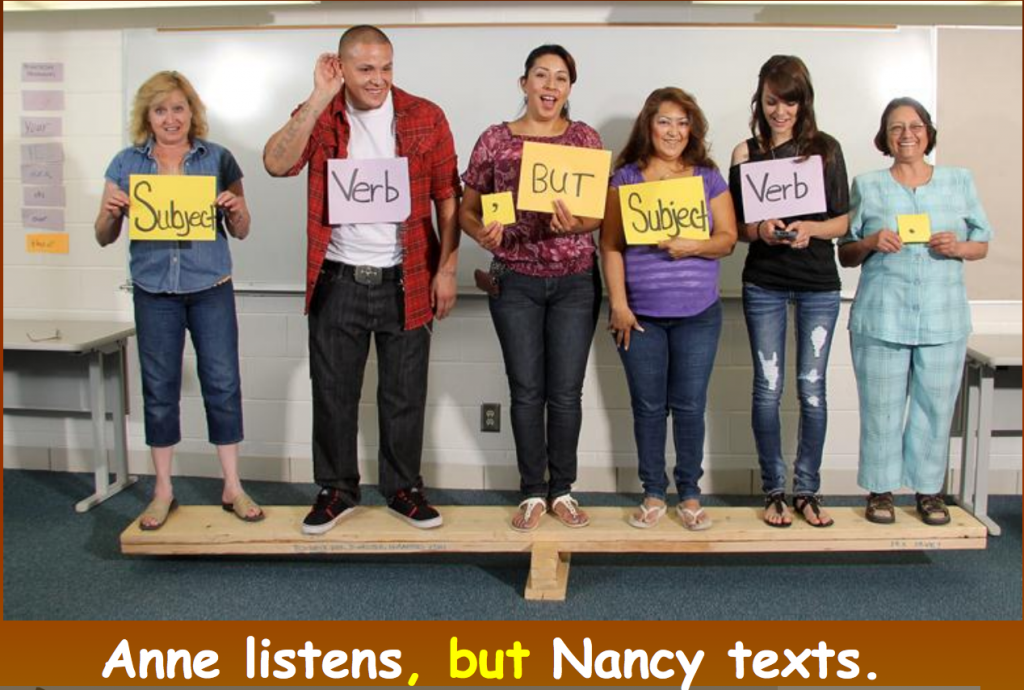Word People is a kinesthetic teaching and learning activity in which students act out sentence structures. The activity can be particularly popular with students who face difficulties in reading and writing. The original idea of acting out “human sentences” with colour-coded cards was developed to explore simple, compound, and complex sentence structures.

Word people activity exploring formal sentence structures
However, the activity can be easily adapted to functional elements in sentences using subject matter representations through Participants, Attributes, Processes, and Circumstances. Student groups of four could act out their “chunk of meaning”, while holding a colour-coded cards (see previous post for colour key).
This activity is particularly suitable for clauses with action processes, as illustrated by the (traditional grammar) example above. The performing students are encouraged to create their own sentences and think about action process they can easily act out. The audience is asked to guess the sentence.
References:
- Humphrey, S., Droga, L., & Feez, S. (2012). Grammar and meaning. Sydney: Primary English Teaching Association Australia. (in particular pages 13-15)
- Walter, J. (n.d.). “Word People”. Acting out sentence structure. Presentation
Relevance to Australian Curriculum content descriptors:
- Year 1: Understand that language is used in combination with other means of communication, for example facial expressions and gestures to interact with others (ACELA1444)
- Year 1: Identify the parts of a simple sentence that represent ‘What’s happening?’, ‘What state is being described?’, ‘Who or what is involved?’ and the surrounding circumstances (ACELA1451)
- Year 1: Explore differences in words that represent people, places and things (nouns, including pronouns), happenings and states (verbs), qualities (adjectives) and details such as when, where and how (adverbs) (ACELA1452)
- Year 2: Identify visual representations of characters’ actions, reactions, speech and thought processes in narratives, and consider how these images add to or contradict or multiply the meaning of accompanying words (ACELA1469)
- Year 3: Understand that verbs represent different processes, for example doing, thinking, saying, and relating and that these processes are anchored in time through tense (ACELA1482)

